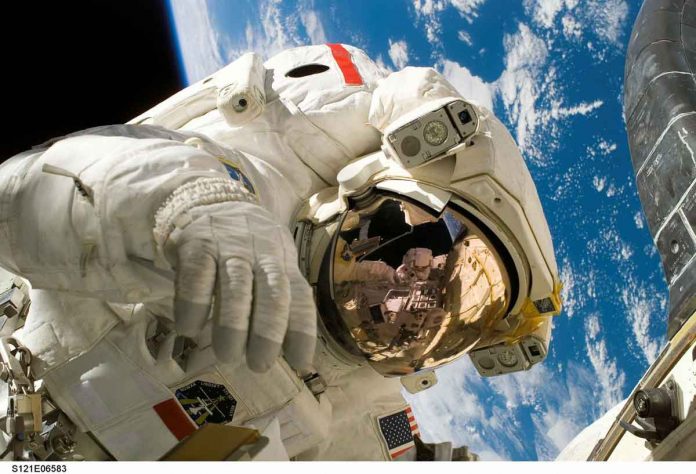Understanding the effects of microgravity on the human body is critical for astronauts to be able to travel for months, if not years, in the harsh environment of space. Significant changes to the body’s skeletal and muscular systems have been studied for decades, and strategies to maintain physical fitness are being implemented aboard the International Space Station through various countermeasures, including vigorous exercise. However, there is still much to discover for scientists and researchers, such as how time spent in space affects the eyes and brain.
About a third of American astronauts’ experience eyesight abnormalities even on trips as brief as two weeks. When travelling for a longer period of time, such as four to six months, this figure may double. However, before scientists can propose potential solutions, they must first understand what is causing the changes.
Gravity drives a person’s normal blood volume downward, below the waist, on Earth. It is forced back up to the areas above the waist, including our eyes, by our heart. But what happens when gravity no longer pulls that volume of blood and other fluids down?
Human body has incredible adaptability. When too much fluid is received, sensors in the upper body detect it, and the body reduces its overall blood volume in microgravity. This reaction, however, does not always totally counteract these fluid alterations. This can be seen in photographs or films taken by astronauts on board the space station. If their faces appear puffy, it could be a sign that they have too much fluid in their heads.
Researchers are trying to figure out whether persistent fluid shifts towards the head during spaceflight cause changes in the structure of the eye, or if fluid accumulates at the rear of the eye. Optical coherence tomography is an imaging technology that uses a special camera to take photographs of the back of the eye, allowing scientists to better understand the implications of increased fluid collection in the tissue.
The principal scientist for Spaceflight Associated Neuro-ocular Syndrome research is Dr. Steven Laurie. He declares, “Since astronauts performed short-duration Space Shuttle trips, we’ve known that eyesight alterations in space occur faster than they would on Earth during the same time period. However, after we noticed swelling around the optic nerve in the back of the eye, it became more problematic since it could lead to long-term vision problems that would be impossible to correct with new prescription lenses.”
Another issue for scientists is that astronauts may not respond to a one-size-fits-all approach to treatment. While all astronauts endure prolonged weightlessness, approximately 70% of them display the first signs of fluid accumulating at the back of the eye, with only 15% showing more worrying signs. These abnormalities can take up to a year to resolve when they return to Earth’s gravity, with some modifications to the eye never fully returning to way they were before spaceflight. Both men and women, in one or both eyes, have been impacted.
“Researchers and medical doctors regularly monitor astronauts during and after spaceflight to see if any lasting vision alterations arise, while also continuing studies to learn more about the underlying reasons of these changes,” Dr. Laurie continues.

